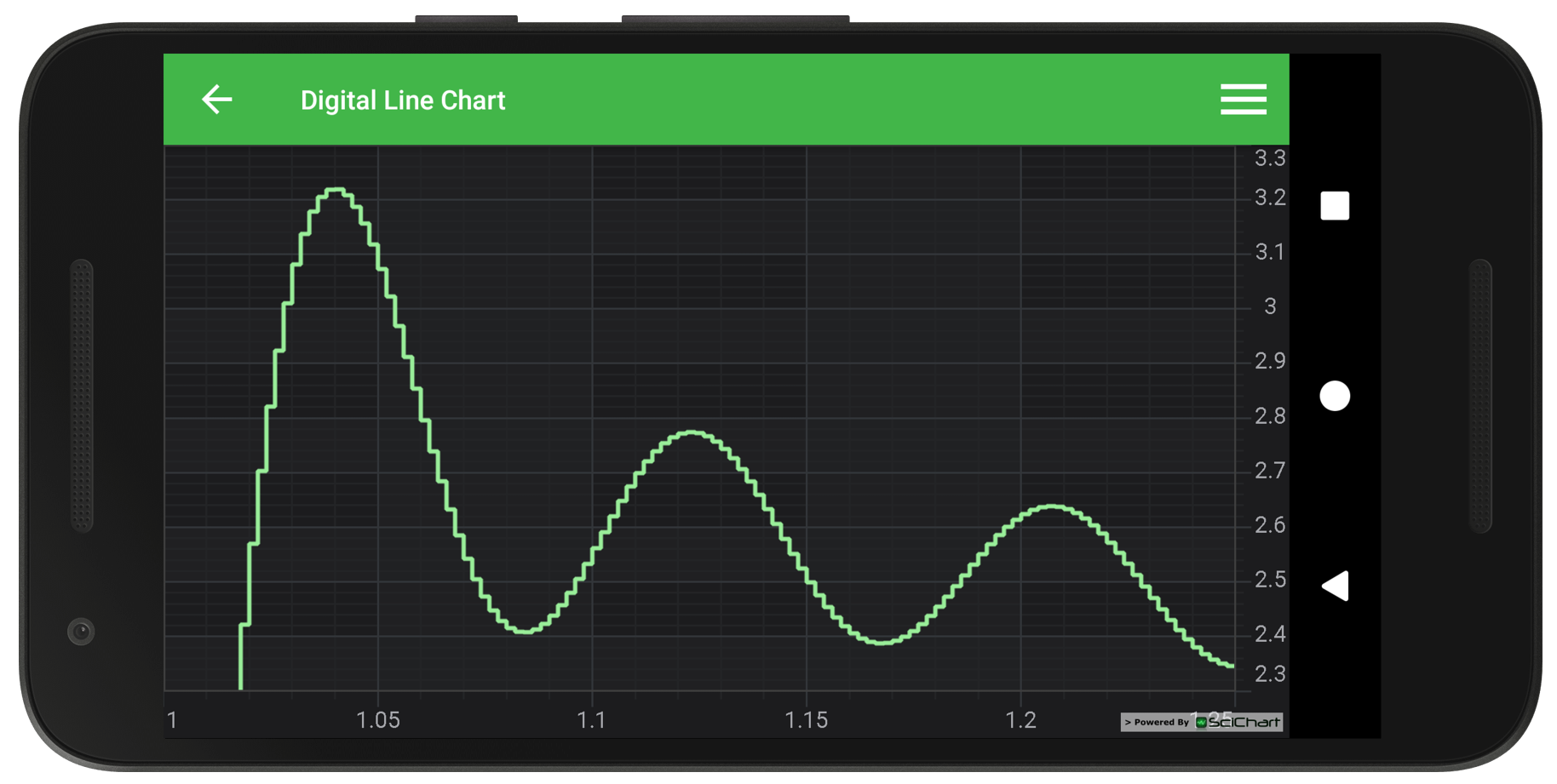Android Chart - Examples
SciChart Android ships with ~90 Android Chart Examples which you can browse, play with, view the source-code and even export each SciChart Android Chart Example to a stand-alone Android Studio project. All of this is possible with the new and improved SciChart Android Examples Suite, which ships as part of our Android Charts SDK.
Digital Line Chart is used to represent a sequence of discrete values, and often is a part of applications used in digital electronics, signal processing, communications etc.
This example shows how to generate the Android Digital (step) Line Chart in code. In SciChart it is done by calling setIsDigitalLine(true) method on an instance of FastLineRenderableSeries class. Digital line series can be used to render an XyDataSeries, XyyDataSeries (renders Y values), XyzDataSeries, HlcDataSeries and OhlcDataSeries(renders Close values).
Tip!
You can be very flexible and change the Line appearance by far:
– Changing its’ color and thickness with setStrokeStyle(PenStyle) methods of FastLineRenderableSeries
– Make it dashed or digital line (step line) setIsVisible(), setIsDigitalLine() methods of FastLineRenderableSeries.
– Customize by adding either predefined or custom data-point markers on a line series using the PointMarker API.
Please note that custom data-point markers will be same very performant as the same bitmap rendering as in our Scatter-Charts is used.
The full source code for the Android Digital Line Chart example is included below (Scroll down!).
Did you know you can also view the source code from one of the following sources as well?
- Clone the SciChart.Android.Examples from Github.
- Or, view source and export each example to an Android Studio project from the Java version of the SciChart Android Examples app.
- Also the SciChart Android Trial contains the full source for the examples (link below).


